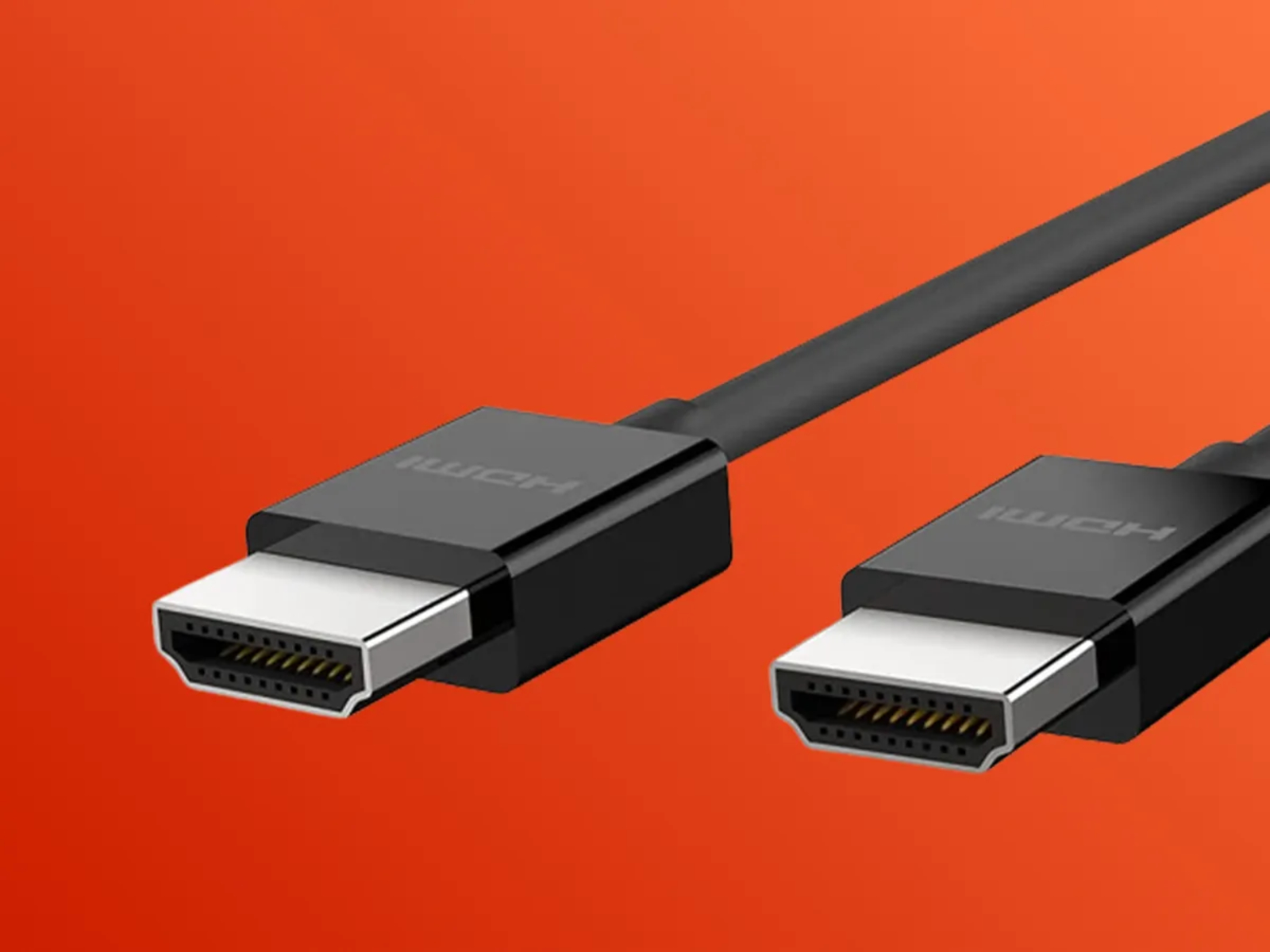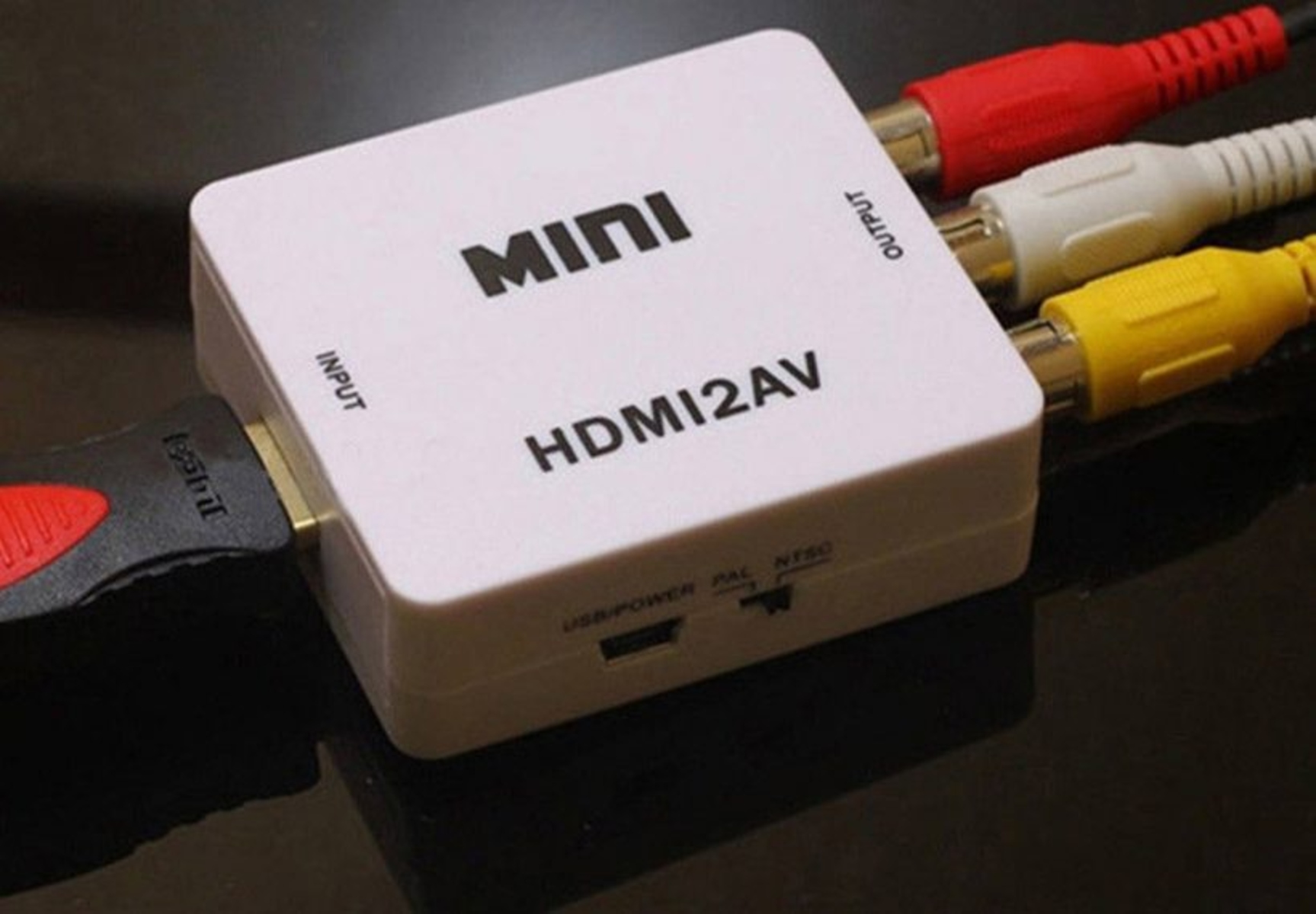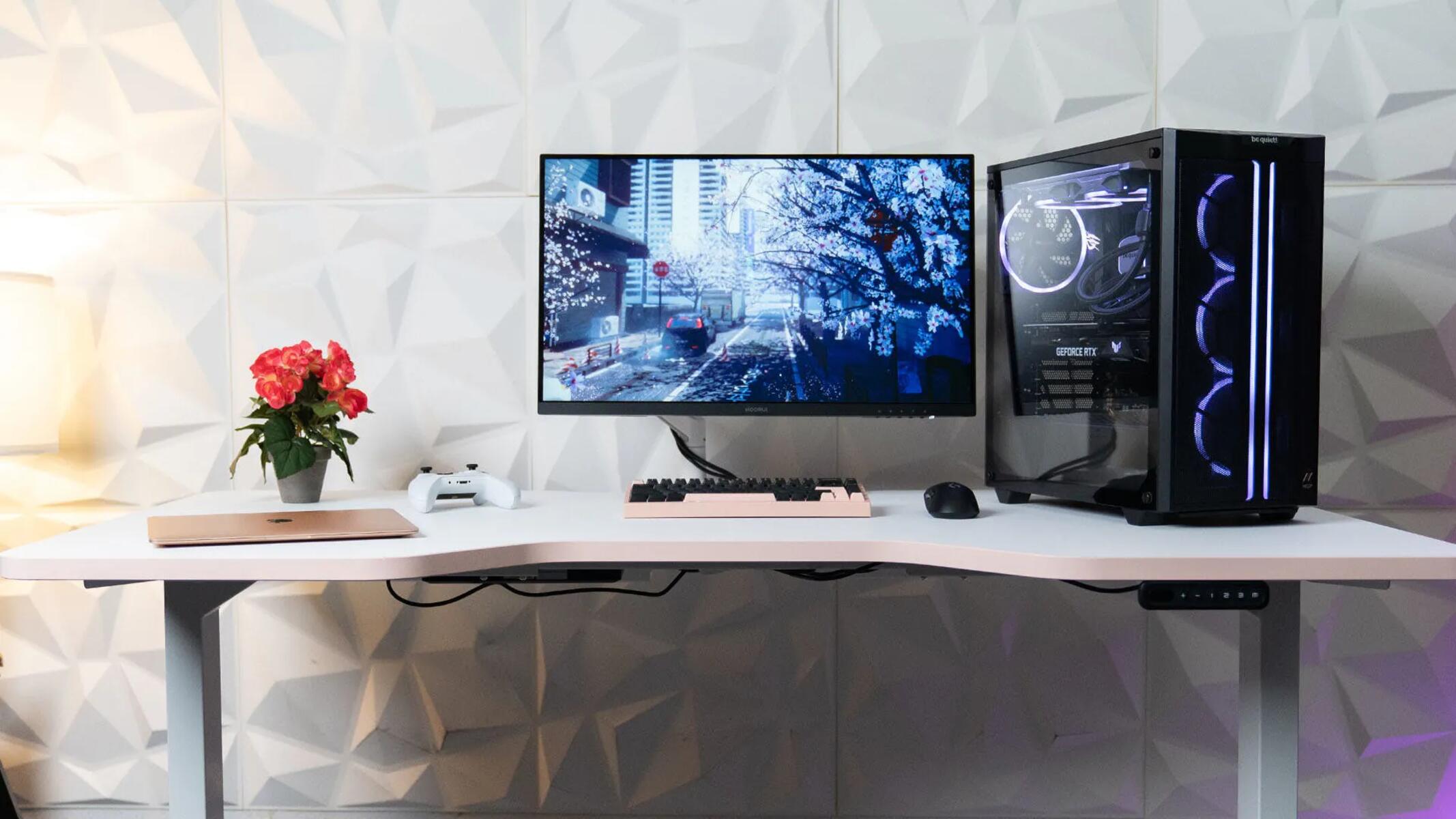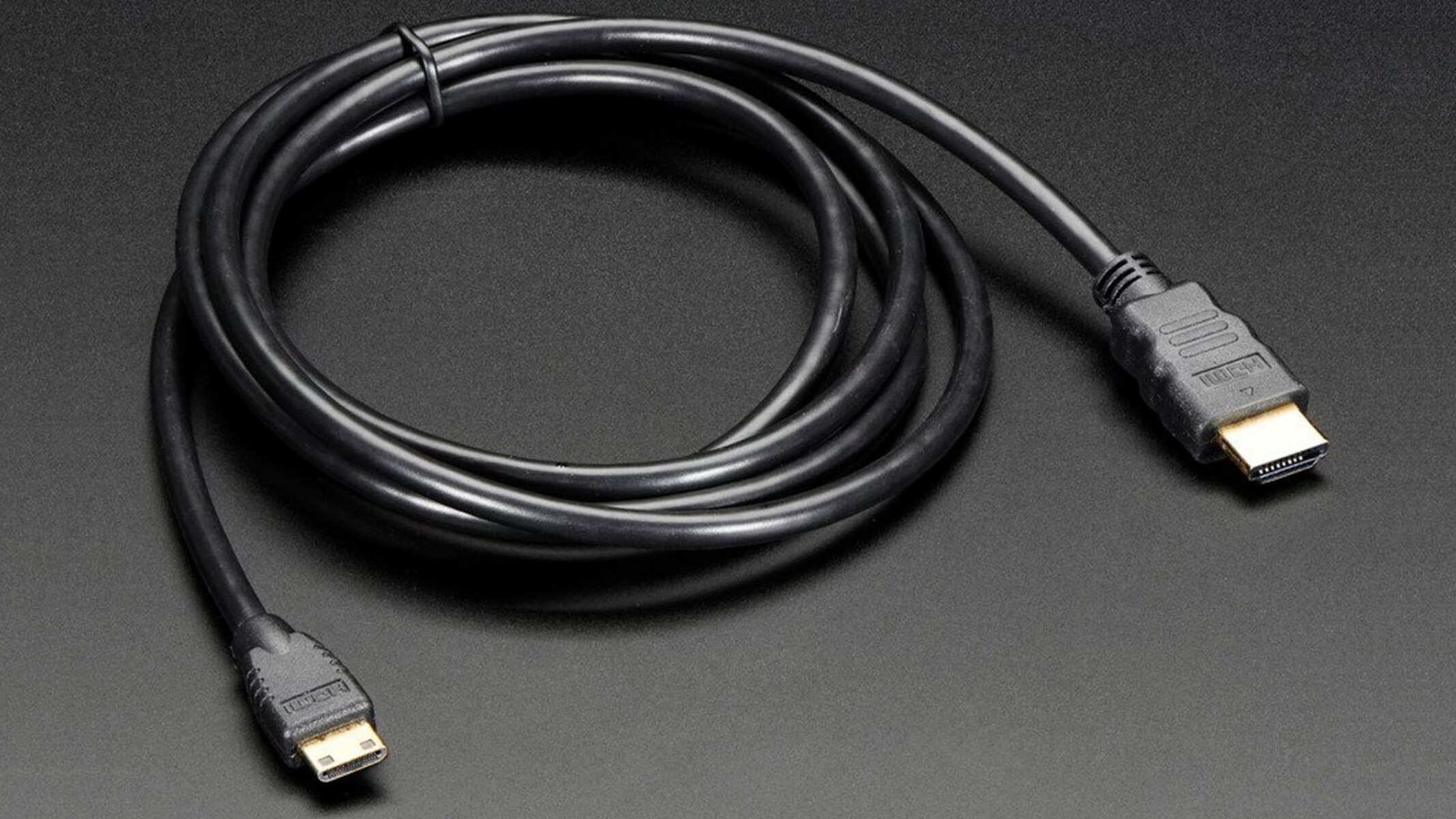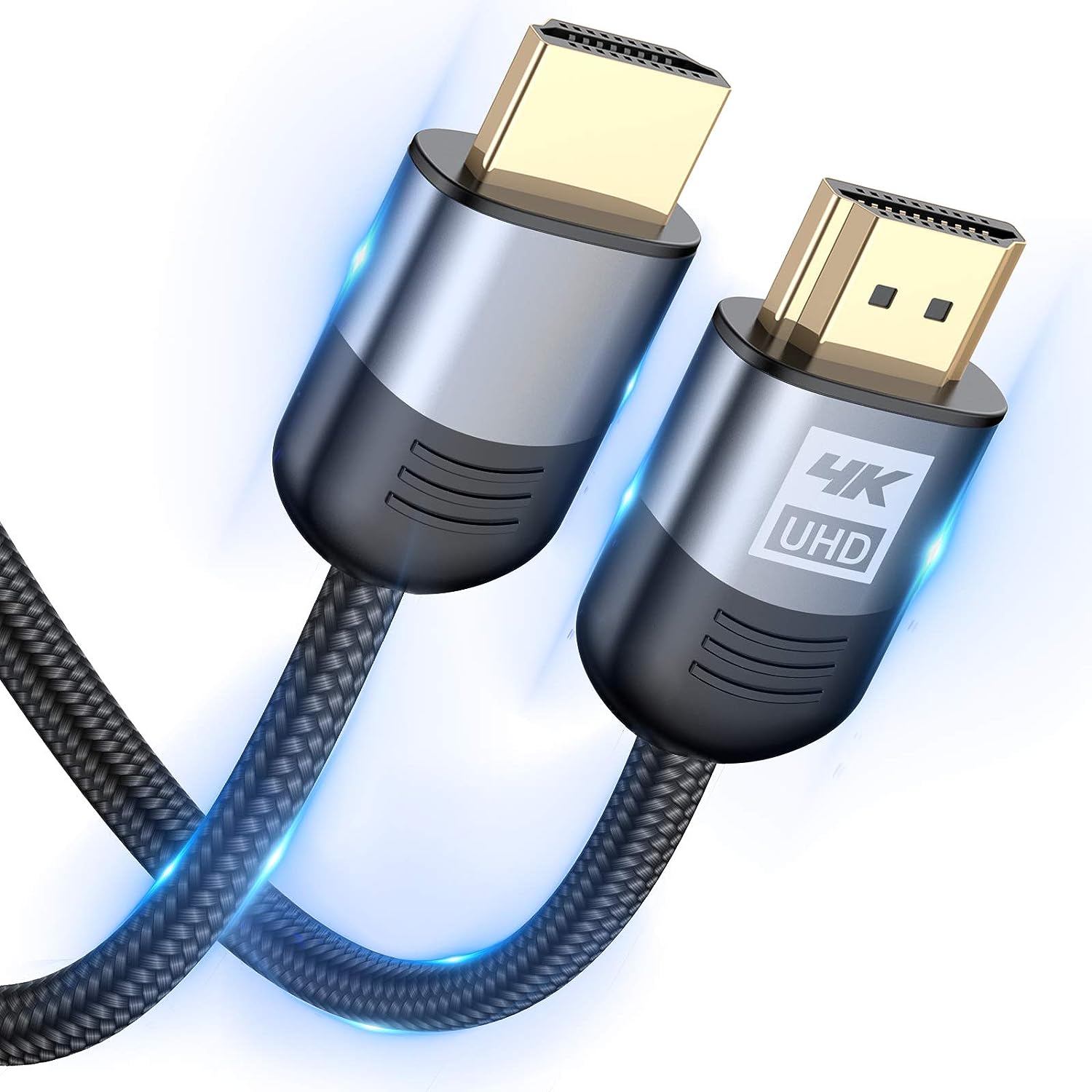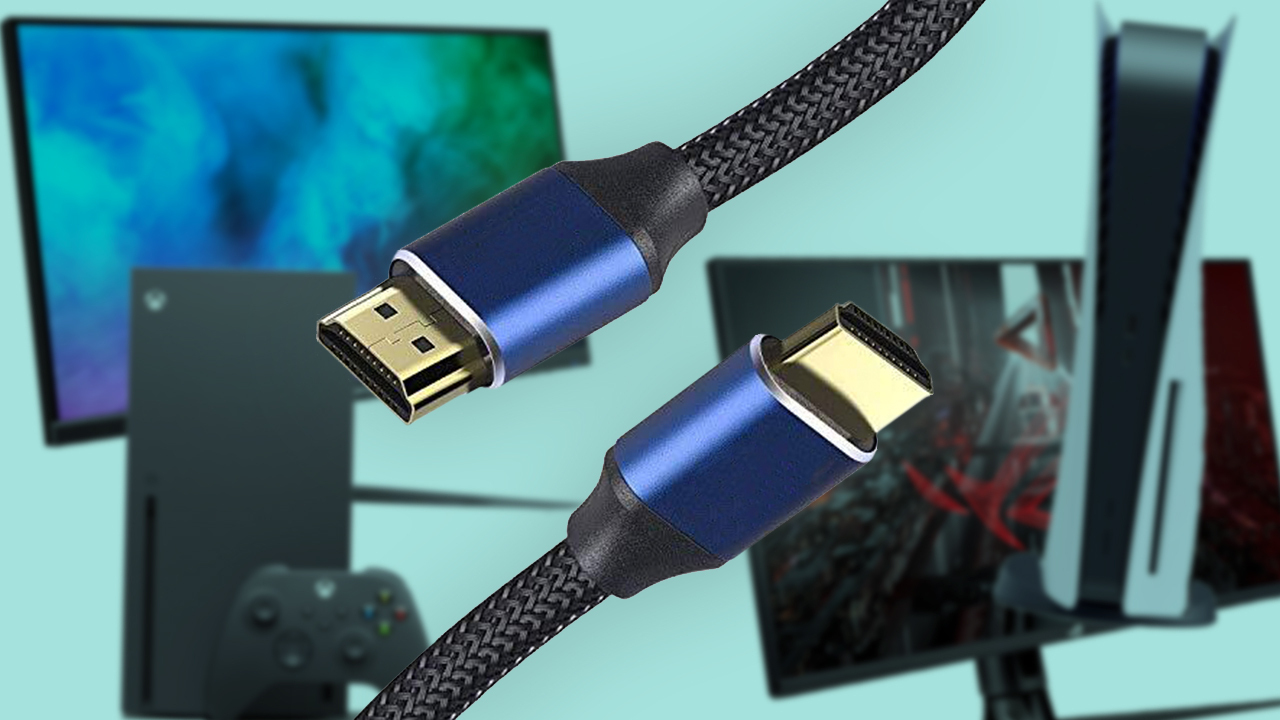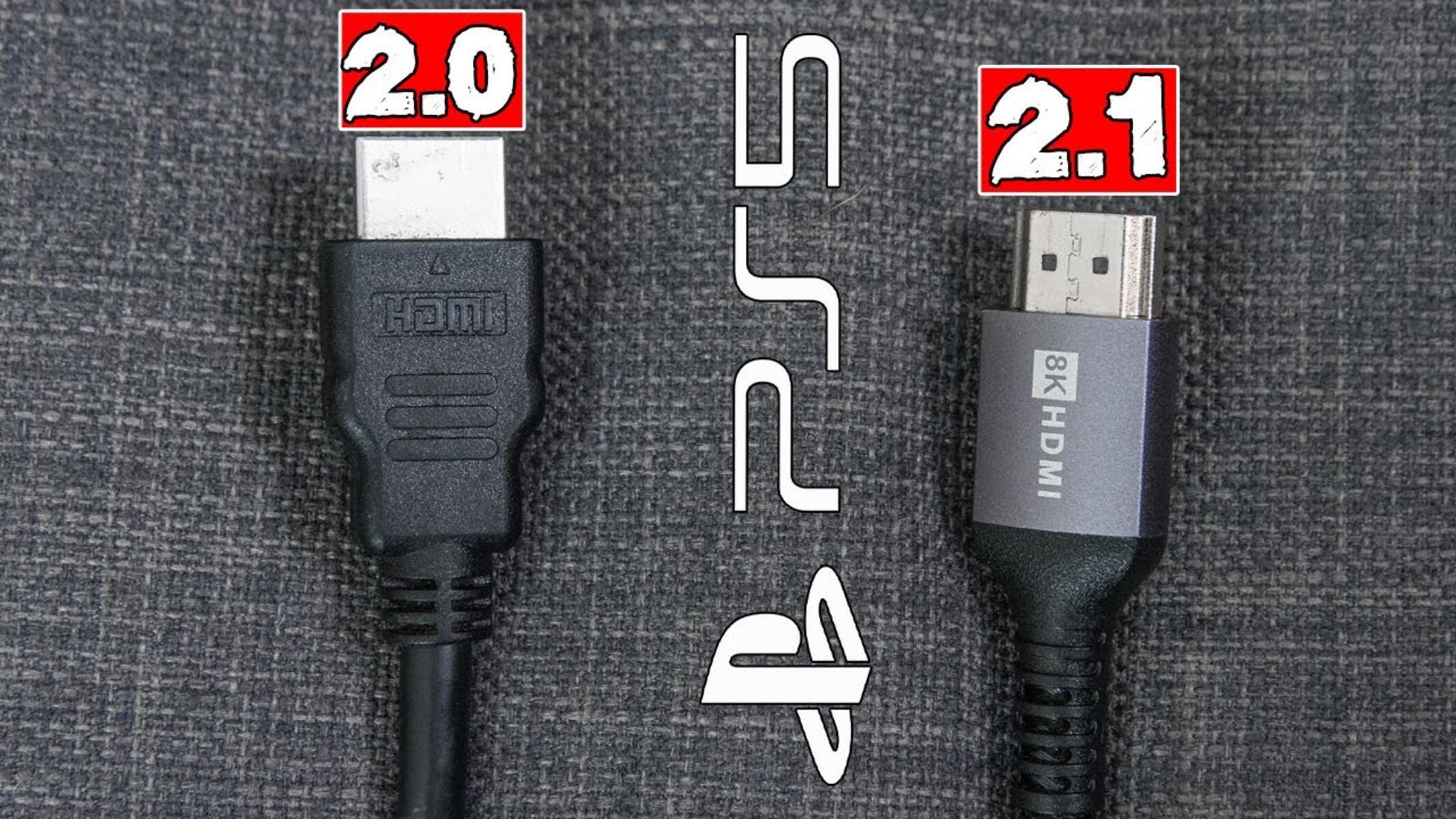Introduction
Welcome to the world of high-definition multimedia! If you’re here, chances are you’re in search of the best HDMI cable for your setup. HDMI (High-Definition Multimedia Interface) cables have become the go-to choice for connecting our devices and enjoying crystal-clear audio and video. With a myriad of options available, it’s essential to understand the basics before making a decision.
The world of HDMI cables can be overwhelming, with varying price ranges, claim of superior quality, and a plethora of technical jargon. From 4K Ultra HD TVs to gaming consoles, Blu-ray players, and sound systems, HDMI cables are the backbone of every multimedia setup. But how do you know which one to choose?
In this guide, we will explore the different types of HDMI cables, the factors to consider when buying one, and debunk some common misconceptions. By the end of this article, you’ll be well-equipped to make an informed decision and enjoy your multimedia experience to the fullest.
Whether you’re a seasoned tech enthusiast or new to the world of HDMI, this guide will provide you with the knowledge you need to navigate the market, ensuring that you find the perfect HDMI cable for your specific requirements. So, let’s dive in and unravel the secrets of HDMI cables!
Understanding HDMI
HDMI, or High-Definition Multimedia Interface, is a digital connection that allows for the transmission of high-quality audio and video signals between devices. It has become the standard choice for connecting everything from TVs and projectors to gaming consoles, DVD players, and sound systems.
One of the key advantages of HDMI is its ability to transmit uncompressed audio and video signals, ensuring a high-quality viewing experience. Unlike analog connections, such as composite or component cables, HDMI provides a digital connection, resulting in sharper images, vibrant colors, and immersive audio.
HDMI cables come in different versions, with each version offering varying capabilities. The most common versions you’ll come across are HDMI 1.4, HDMI 2.0, and HDMI 2.1, with the latter being the most recent and advanced version. Each version supports different resolutions, refresh rates, and features.
When it comes to resolution, HDMI cables can handle anything from standard definition (480p) to high-definition (1080p), and even ultra-high definition (4K) and beyond. Higher versions of HDMI cables, such as HDMI 2.0 and 2.1, can support the latest video formats like HDR (High Dynamic Range), allowing for more lifelike and dynamic visuals.
In addition to video, HDMI cables also transmit audio signals. They support various audio formats, including stereo, surround sound, and even more advanced formats like Dolby Atmos. This means you can enjoy immersive audio experiences that complement the stunning visuals provided by HDMI.
Another advantage of HDMI is its simplicity and convenience. With HDMI, you only need a single cable to connect your devices, eliminating the need for multiple cables and reducing clutter. HDMI cables also support two-way communication, enabling your devices to communicate and exchange information seamlessly.
Overall, HDMI has revolutionized the way we connect and enjoy our multimedia devices. Its ability to deliver high-quality audio and video signals, support for various resolutions and features, and ease of use have made it the go-to choice for home theaters, gaming setups, and professional multimedia installations.
Factors to Consider Before Buying an HDMI Cable
When shopping for an HDMI cable, it’s important to consider a few key factors to ensure that you get the right cable for your needs. Let’s explore these factors:
- Compatibility: Ensure that the HDMI cable you choose is compatible with the devices you plan to connect. Check the HDMI version supported by your devices and choose a cable that matches or exceeds that version.
- Cable Length: Consider the distance between your devices and choose an appropriate cable length. It’s advisable to measure the distance and add a couple of feet for flexibility. However, avoid excessive lengths as longer cables can result in signal degradation.
- Resolution and Refresh Rate: If you have a 4K TV or plan to upgrade to one in the future, make sure the HDMI cable you choose supports the resolution and refresh rate you desire. Look for cables that specify support for 4K, 8K, or even higher resolutions.
- Build Quality: Pay attention to the build quality of the HDMI cable. Look for cables with gold-plated connectors, as they offer better conductivity and corrosion resistance. Also, consider cables with sturdy housing and durable insulation to ensure longevity.
- Shielding: HDMI cables can be susceptible to interference, which can degrade signal quality. Opt for cables with shielding to minimize external interference and ensure a reliable connection.
- Price: While it’s tempting to go for the cheapest option, be cautious of extremely low-priced cables. While expensive doesn’t always mean better quality, very cheap cables may compromise on build quality or lack necessary features. Look for a balance between affordability and quality.
By taking these factors into consideration, you can make an informed choice when purchasing an HDMI cable that meets your specific requirements. Remember, the right HDMI cable can make a significant difference in the performance and overall viewing experience of your multimedia setup.
Different Types of HDMI Cables
When shopping for HDMI cables, you’ll come across different types that offer varying functionalities and features. Understanding the different types can help you choose the appropriate cable for your specific needs. Here are the most common types of HDMI cables:
- Standard HDMI: Standard HDMI cables are the most common type and are suitable for most home entertainment setups. They support standard definition and high-definition video resolutions up to 1080p, making them ideal for connecting Blu-ray players, gaming consoles, and TVs.
- High-Speed HDMI: High-Speed HDMI cables are designed to handle higher resolutions and refresh rates. They support video resolutions up to 4K and even 8K, making them ideal for advanced home theater systems and gaming setups. High-Speed HDMI cables are also compatible with features like 3D video and deep color.
- Premium High-Speed HDMI: Premium High-Speed HDMI cables are built to meet the highest performance standards. They support the latest HDMI features, including 4K, 8K, HDR, and more. These cables are suitable for professional installations and advanced multimedia setups that demand the highest quality.
- Active HDMI: Active HDMI cables incorporate active signal boosting technology, allowing for longer cable lengths without signal degradation. These cables are ideal for setups where you need to cover a significant distance between devices or require flexibility in cable placement.
- Mini HDMI and Micro HDMI: Mini HDMI and Micro HDMI cables are designed for smaller devices like smartphones, tablets, and cameras. These compact cables allow you to connect your portable devices to larger displays, such as TVs or monitors, for a big-screen viewing experience.
- Ethernet HDMI: Ethernet HDMI cables have an additional Ethernet channel within the cable construction. This allows for internet connectivity to be transmitted alongside audio and video signals, eliminating the need for a separate Ethernet cable in certain setups.
It’s important to note that when it comes to HDMI cables, the cable type doesn’t directly correlate with cable quality or performance. For most home entertainment setups, a High-Speed HDMI cable will suffice. However, for advanced features, higher resolutions, or longer cable lengths, it may be necessary to opt for a Premium High-Speed HDMI or Active HDMI cable.
Considering the requirements of your setup and the features you desire will help you choose the right type of HDMI cable to ensure optimal performance and compatibility.
The Importance of Cable Length
When choosing an HDMI cable, one important factor to consider is the length of the cable. The cable length plays a crucial role in ensuring a reliable and high-quality connection between your devices. Here’s why cable length is important:
Signal Degradation: HDMI signals can suffer from signal degradation as the cable length increases. This means that the longer the cable, the weaker the signal becomes, resulting in a decrease in video and audio quality. It is important to choose an appropriate cable length to avoid any noticeable degradation in signal quality.
Interference: Longer cables also have a higher susceptibility to interference, which can further degrade the signal quality. Interference can come from various sources, including nearby electrical cables, wireless devices, or even physical obstructions. Keeping the cable length as short as possible reduces the chance of interference affecting the signal.
Flexibility and Ease of Installation: Choosing the right cable length ensures flexibility and ease of installation. If the cable is too short, you may struggle to connect your devices if they are not in close proximity. On the other hand, excessively long cables can be cumbersome to manage and may result in cable clutter. Measure the distance between your devices and choose a length that provides enough flexibility without compromising on signal quality.
Cost Considerations: Cable length can also affect the cost of your HDMI cable. Generally, longer cables tend to be more expensive compared to shorter ones. Therefore, it is important to determine the appropriate cable length needed for your setup to avoid unnecessary expenses.
It’s important to note that while HDMI cables can reach lengths of up to 50 feet or more, it’s advisable to keep the cable length as short as possible for optimal performance. If you require longer cable lengths, you may need to consider using an active HDMI cable or HDMI signal boosters to maintain signal quality.
By selecting the right cable length, you can ensure a reliable connection between your devices and enjoy high-quality audio and video signals. Remember to consider the distance between your devices, potential signal degradation, and the overall convenience of cable management when making your decision.
Active vs. Passive HDMI Cables
When shopping for HDMI cables, you may come across the terms “active” and “passive.” These terms refer to the type of signal transmission within the cable and can impact the signal quality and cable length. Let’s explore the difference between active and passive HDMI cables:
Passive HDMI Cables: Passive HDMI cables are the most common type of HDMI cable. They rely on the source device (such as a Blu-ray player or gaming console) to provide the power needed to transmit the signal. Passive cables are generally limited in terms of the maximum cable length they can support. Typically, passive HDMI cables are recommended for cable lengths up to 25 feet, beyond which signal degradation may occur.
Active HDMI Cables: Active HDMI cables, on the other hand, incorporate built-in signal amplification technology. This means that the cable itself has the ability to boost the signal, allowing for longer cable lengths without significant signal degradation. Active HDMI cables are equipped with chips or electronics within the connectors that require an external power source, usually through USB. The added power enables the cable to maintain signal integrity even over longer distances, making them ideal for setups where you need to cover a substantial distance between devices.
The primary advantage of active HDMI cables is their ability to transmit signals reliably over longer distances, typically up to 50 feet or more. This makes them suitable for home theater installations, classrooms, conference rooms, and other scenarios where devices may be located far apart.
It’s important to note that active HDMI cables are generally more expensive than passive cables due to the technology involved. Additionally, active cables may have slightly larger connectors or thicker cables due to the additional electronics incorporated.
When considering whether to use an active or passive HDMI cable, assess your specific needs and determine the required cable length. If your devices are located relatively close to each other, a passive HDMI cable should suffice. However, if you need to cover a longer distance, an active HDMI cable may be necessary to maintain signal quality.
Ultimately, the choice between active and passive HDMI cables depends on your specific setup and requirements. Consider factors such as cable length, signal strength, and budget to make an informed decision that ensures optimal performance and signal integrity.
HDMI Cable Features to Look Out For
When selecting an HDMI cable, it’s important to be aware of certain features that can enhance your viewing experience and ensure compatibility with the latest technologies. Here are some key features to look out for:
- High Resolution Support: Ensure that the HDMI cable you choose supports the highest resolution you plan to use. Look for cables that are certified for 4K, 8K, or even higher resolutions to ensure optimal performance.
- High Refresh Rates: If you’re a gamer or enjoy watching fast-paced action, consider an HDMI cable that supports high refresh rates. Look for cables that can handle 120Hz or even 240Hz refresh rates to ensure smooth and fluid motion.
- High Dynamic Range (HDR) Support: HDR technology enhances the contrast and color accuracy of images, resulting in more lifelike and vibrant visuals. Make sure your HDMI cable supports HDR if you have a HDR-compatible device, such as a 4K TV or gaming console.
- Audio Return Channel (ARC): ARC allows for audio to be sent from your TV to your sound system through the HDMI cable. If you have a soundbar or a home theater system, look for an HDMI cable with ARC support to simplify your audio setup.
- Ethernet Channel: An HDMI cable with an Ethernet channel allows for internet connectivity to be transmitted alongside audio and video signals. This can save you from having to use a separate Ethernet cable in certain setups.
- Flexible and Durable Construction: Look for HDMI cables with flexible yet durable construction. Cables with a braided shielding or rugged housing are more resistant to wear and tear, ensuring longevity and reliable performance.
- Gold-Plated Connectors: HDMI cables with gold-plated connectors offer better conductivity, improved signal transmission, and resistance to corrosion. These connectors provide a more reliable connection and can contribute to better overall performance.
- Length and Cable Management: Choose a cable length that caters to your specific setup, ensuring flexibility without compromising signal quality. Additionally, consider cable management features such as cable ties or clips to keep your cables organized and minimize clutter.
By considering these features, you can select an HDMI cable that meets the demands of your multimedia setup and ensures compatibility with the latest technologies. Whether you’re a movie enthusiast, a gamer, or simply seeking optimum audio and video performance, paying attention to these features will help enhance your viewing experience.
Are Expensive HDMI Cables Worth It?
When shopping for HDMI cables, you’ll come across a wide range of prices, from affordable options to significantly more expensive ones. This leads to the question: are expensive HDMI cables worth the investment? Let’s explore this topic further:
Signal Quality: One common misconception is that expensive HDMI cables will always provide better signal quality. The truth is that as long as the cable meets the necessary specifications for your desired resolution and features, the signal quality should be the same across different price ranges. HDMI cables are designed to transmit digital signals, and as long as they meet the required standards, there should be no difference in picture or sound quality.
Build Quality: Expensive HDMI cables often feature higher-quality materials and better construction. This can result in a more durable cable that is less prone to wear and tear. Additionally, higher-end cables may include extra features like gold-plated connectors for better signal transmission and insulation to minimize interference. While these features may improve the longevity and reliability of the cable, they might not have a noticeable impact on the actual performance or signal quality.
Specific Requirements: In certain circumstances, expensive HDMI cables may be necessary. For example, if you require an exceptionally long cable length, an active HDMI cable with signal boosting capabilities may be needed, which could be more expensive than a standard cable. Similarly, if you have advanced audiovisual equipment supporting features like 8K resolution or HDR, you may need to invest in a cable that specifically supports those features. In such cases, spending more on a cable that meets your specific requirements can be justified.
Peace of Mind: Some people opt for expensive HDMI cables for peace of mind or the belief that a higher price equates to better quality. If investing in a more expensive cable brings you confidence and satisfaction, then it may be worth it for your peace of mind. However, keep in mind that the performance difference between an expensive cable and a more affordable one may be negligible, especially for standard home entertainment setups.
In summary, the decision to purchase an expensive HDMI cable ultimately depends on your specific requirements and budget. For most typical home entertainment setups, there is no need to spend a significant amount on an HDMI cable. As long as the cable meets the necessary specifications and is of decent build quality, it will perform just as well as more expensive options. However, if you have specific requirements or desire additional features, investing in a higher-priced cable may be warranted.
HDMI Cable Myths Debunked
When it comes to HDMI cables, there are several myths and misconceptions that have circulated over the years. Let’s debunk some of the most common myths surrounding HDMI cables:
Myth 1: Expensive HDMI cables provide better picture and sound quality. This is one of the most prevalent myths surrounding HDMI cables. The truth is that as long as the cable meets the necessary specifications for your desired resolution and features, there will be no difference in picture or sound quality between an expensive cable and a more affordable one. The signal is transmitted digitally, and as long as the cable can handle the required data rate, the quality will remain the same.
Myth 2: HDMI cables need to be replaced regularly. HDMI cables are built to last. As long as the cable is not physically damaged, there is no need to replace it unless you require a longer length or need to upgrade to a cable with specific features. Cables can last for several years or even longer, providing reliable performance throughout their lifespan.
Myth 3: All HDMI cables are the same. While it is true that HDMI cables with the same specifications will provide the same performance, there can be differences in build quality and additional features. Factors such as connector durability, shielding against interference, and cable flexibility may vary between different cables. However, these differences often do not impact the actual performance or signal quality.
Myth 4: More expensive HDMI cables have a stronger signal. The signal strength in HDMI cables is not determined by the price tag. As long as the cable meets the necessary specifications, the signal strength will be the same regardless of the price. Signal strength is more influenced by factors such as cable length and the devices being connected, rather than the cost of the cable itself.
Myth 5: HDMI cables require burn-in or break-in time. This myth suggests that new HDMI cables need to go through a “burn-in” or “break-in” period to reach their optimal performance. However, this is not true. Once properly connected, HDMI cables should provide optimal performance right from the start. There is no need to wait for any specific amount of time for the cable to “settle in.”
It’s important to separate fact from fiction when it comes to HDMI cables. Understanding these myths helps you make informed decisions and avoid unnecessary expenses when purchasing HDMI cables for your home entertainment setup. Remember, as long as the cable meets the required specifications and is of decent build quality, it will perform just as well as more expensive options.
Conclusion
Choosing the right HDMI cable is crucial for ensuring a seamless and high-quality audiovisual experience. By understanding the different types of HDMI cables, considering factors like cable length and compatibility, and debunking common myths, you can make an informed decision when making your purchase.
Remember that signal quality is not determined by the price of the cable. As long as it meets the necessary specifications and is of decent build quality, an affordable HDMI cable will perform just as well as an expensive one. Consider your specific requirements, such as resolution, refresh rate, and features like HDR or ARC, to select the right cable for your setup.
Additionally, be mindful of the cable length and choose a length that suits your setup without compromising signal quality. If you need to cover longer distances, consider active HDMI cables or signal boosters to maintain optimal performance.
Finally, be aware of common myths surrounding HDMI cables, such as the belief that expensive cables provide better signal quality or the need for regular cable replacement. Debunking these myths will save you from unnecessary expenses and help you make a more informed decision.
By considering these factors and making a well-reasoned choice, you can confidently connect your devices and enjoy a high-definition audiovisual experience that meets your specific needs. So, go ahead and find the perfect HDMI cable for your setup, and elevate your home entertainment to new heights!







